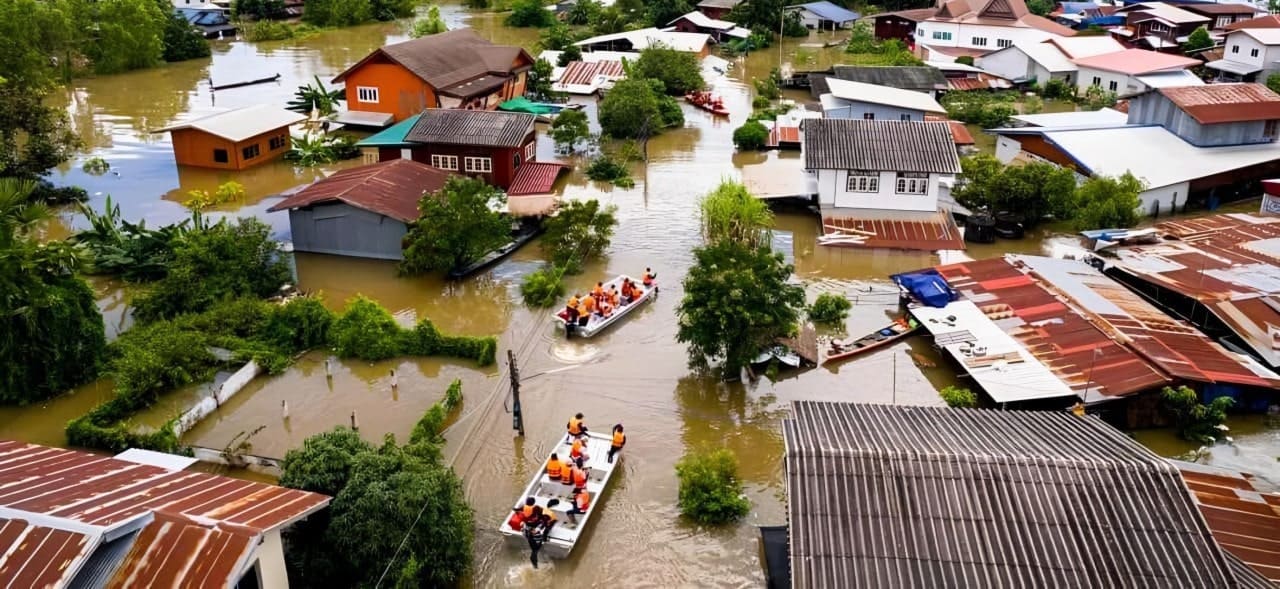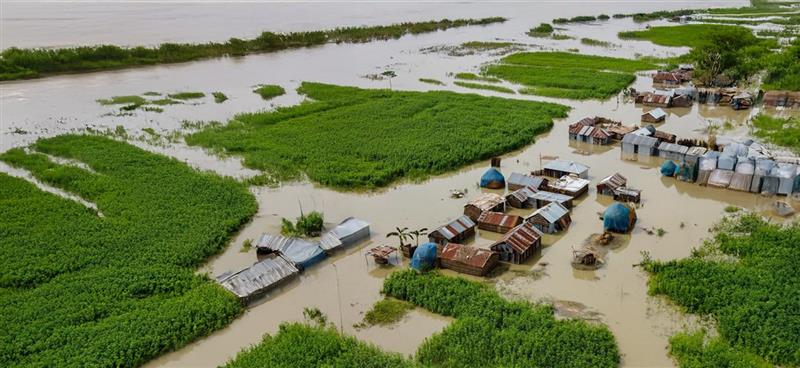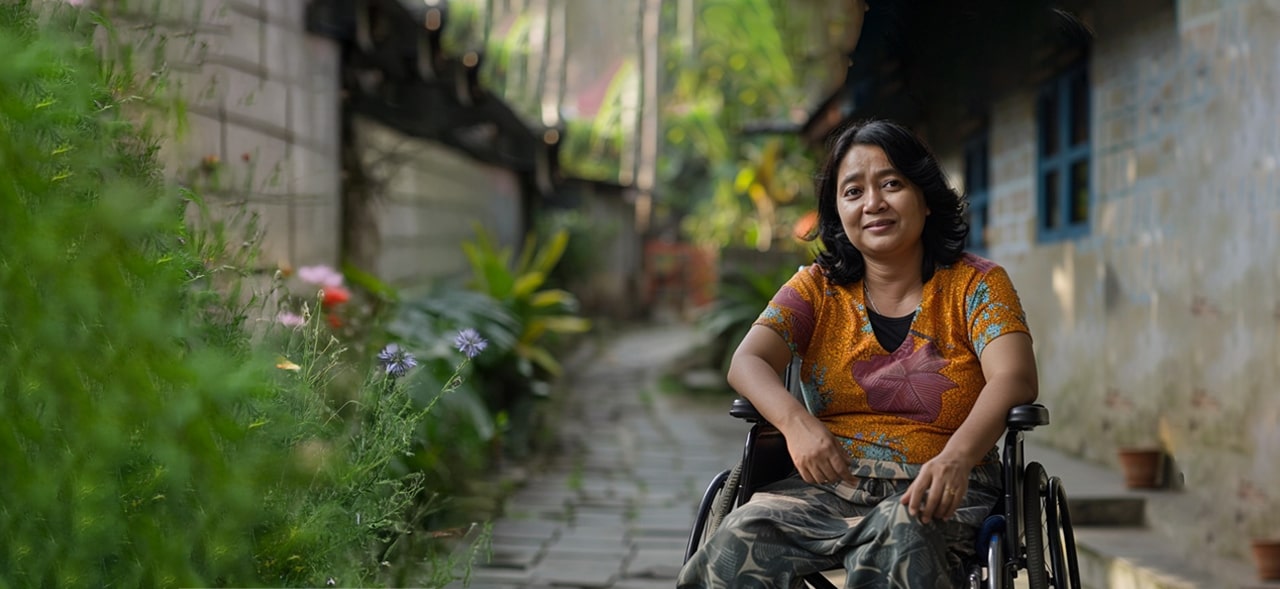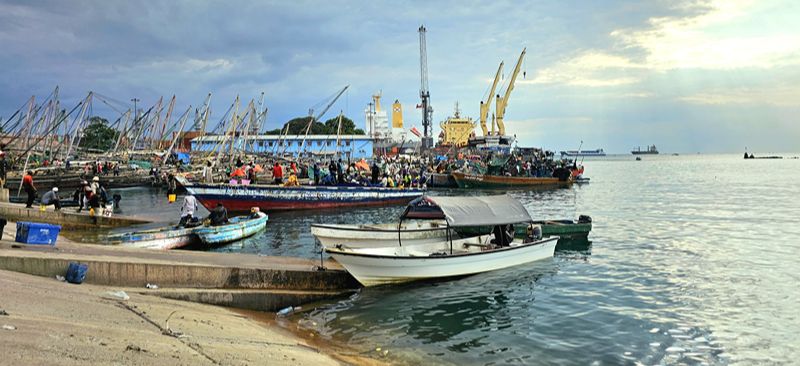This report shines a spotlight on sneaky interface tricks that quietly push users- especially those with limited income- into costly decisions they didn’t intend to make. By exposing five common manipulative design tactics like guilt-tripping and hiding fees, the report calls for ethical design and collaboration among regulators, providers, and policymakers. The goal? Creating digital financial services that users genuinely trust and feel confident using, making finance fairer and more inclusive for all.
Blog
Turning the tide: How India’s SACHET system is reshaping disaster preparedness
On the dark monsoon night of 16th August 2018, several rivers in Kerala burst through embankments and reservoir gates, sending vast amounts of muddy water churning into low-lying villages. By dawn, at least 445 people were dead, nearly a million forced from their homes, and entire communities lay submerged under a churning, brown sea.
Critically, no sirens or SMS alerts warned residents of the rising waters. Although India had 275 flood-forecasting stations, none covered the specific rivers that flooded—a gap previously identified by experts. Post-flood reviews concluded that an end-to-end early warning system (EWS) could have provided the necessary warning for evacuation and mitigated this disaster.
The tragedy in Kerala tragedy highlights a global truth: Climate change has intensified extreme weather events, while their frequency has surged fivefold over the past 50 years. This has made EWS more critical than ever. These systems convert forecasts into clear, actionable alerts to give authorities and the public vital time to prepare and act.
The World Meteorological Organization (WMO) defines EWS as a coordinated framework that transforms hazard information into effective action through four interconnected pillars:
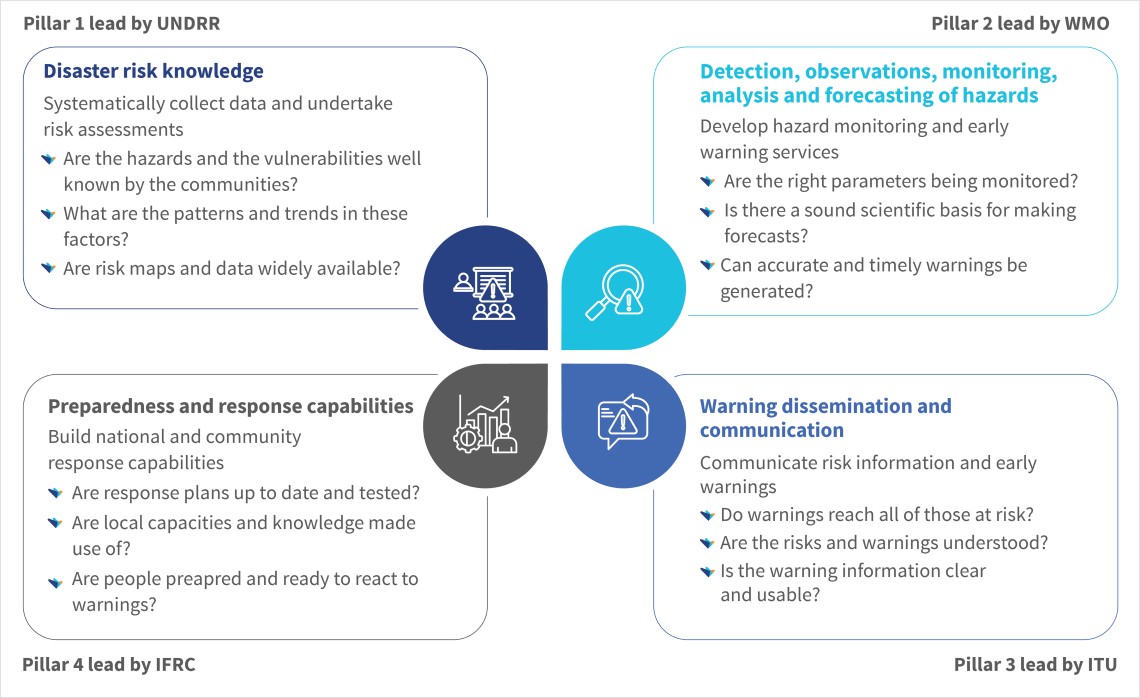
Studies show that effective EWS can achieve substantial results. It can avert USD 3 to 16 billion in annual economic losses, reduce disaster fatalities by eight times, and cut economic damages by 30% with just a 24-hour notice. Yet, half the world’s countries lack an adequate EWS. This leaves a third of the global population unprotected.
To combat this, the United Nations launched the Early Warnings for All initiative to achieve near-universal EWS coverage by 2027. Yet, the success of these systems hinges on careful design, strategic deployment, and operational efficiency. In this context, the , partnered with MSC to undertake a case study on India’s recently established public warning system, SACHET. It can serve as a valuable model for other countries that seek to enhance their public alerting capabilities.
India’s alerting challenges
Historically, warnings relied on slow channels, such as radio, TV, and newspapers. In India, these challenges were compounded by outdated SMS lists that missed travelers and migrant workers. Alerts often went to entire districts, creating alert fatigue, and were rarely in local languages. Furthermore, multiple agencies sent uncoordinated alerts manually, meaning citizens received too little warning, too late.
Today, mobile networks reach more than 95% of the global population, which makes phones vital to modern early warning systems. Countries have started to adopt location-based SMS and cell broadcast to send geofenced alerts in seconds. Following this trend, India too saw a need for a unified, mobile-first system to replace its legacy channels.
The entry of SACHET
The National Disaster Management Authority (NDMA) and the Centre for Development of Telematics (C-DOT) developed SACHET (“to be alert” in Hindi) to meet India’s disaster alerting needs. Launched nationwide in August 2021, it serves as the country’s first unified digital platform for issuing disaster warnings, also known as a public warning system.
At its core, SACHET uses the Common Alerting Protocol (CAP)—an open, XML-based standard that gives every warning a consistent structure, so alerts from different agencies can be shared, understood, processed, and disseminated immediately. Crucially, SACHET brings together two key groups of stakeholders on one secure platform—alert-generating agencies (AGAs) and alert-authorizing agencies (AAAs). The following infographic describes how they work:

When an AGA triggers an alert, SACHET automatically routes it to the relevant SDMA or AAA. These officials then carefully review the message, translate it into local languages, and refine its content for clarity and effectiveness. They also use geographic information systems to define affected areas precisely by creating detailed “geofences” (see Figure 1 below). This meticulous approach ensures that warnings reach only those directly threatened and minimizes unnecessary panic and alert fatigue. The finalized warning is disseminated across all chosen media channels with a single click within a few minutes.
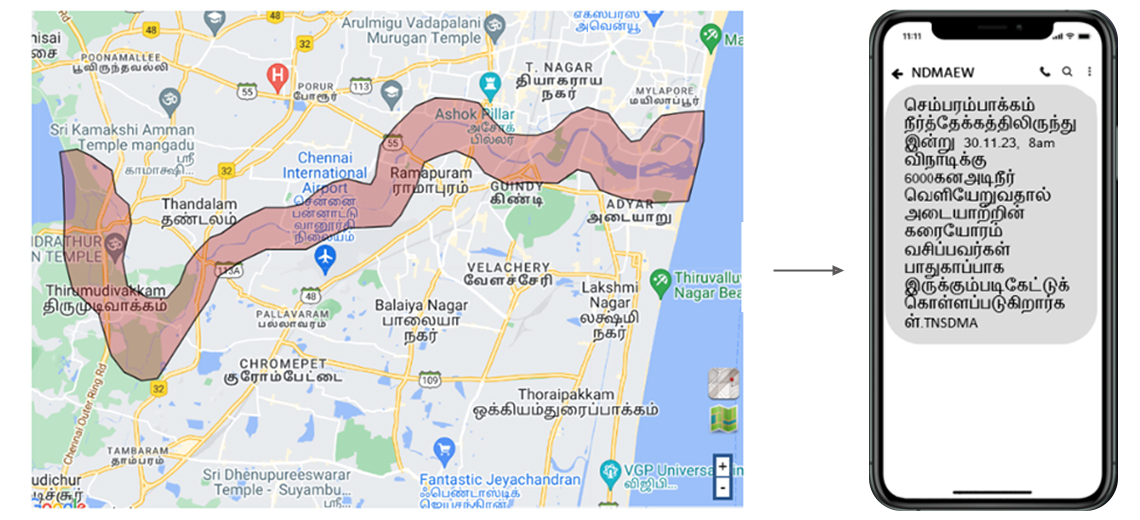
Figure 1: Example of a geotargeted flood alert SMS disseminated in the local language through SACHET
Mobile network operators form the backbone of SACHET. They enable the swift exchange of messages through India’s four largest operators: Airtel, Jio, Vodafone Idea, and BSNL. The system uses both location-based SMS (LB-SMS) and cell broadcast (CB) technologies to send quick, geotargeted messages to mobile phones. While they have different strengths and limitations, a system that intelligently combines both for the right context is most effective (See here for more on this).
Beyond mobile alerts, SACHET uses multiple communication channels, such as television crawls, radio broadcasts, railway station display boards, mobile apps, social media, browser RSS feeds, and satellite communication (See Figure 2 below). This comprehensive “many channels, one message” approach ensures universal coverage and guarantees that critical alerts reach everyone. It does not matter whether a person is online or offline, watching TV, or working in the fields. Some form of alert will reach them.
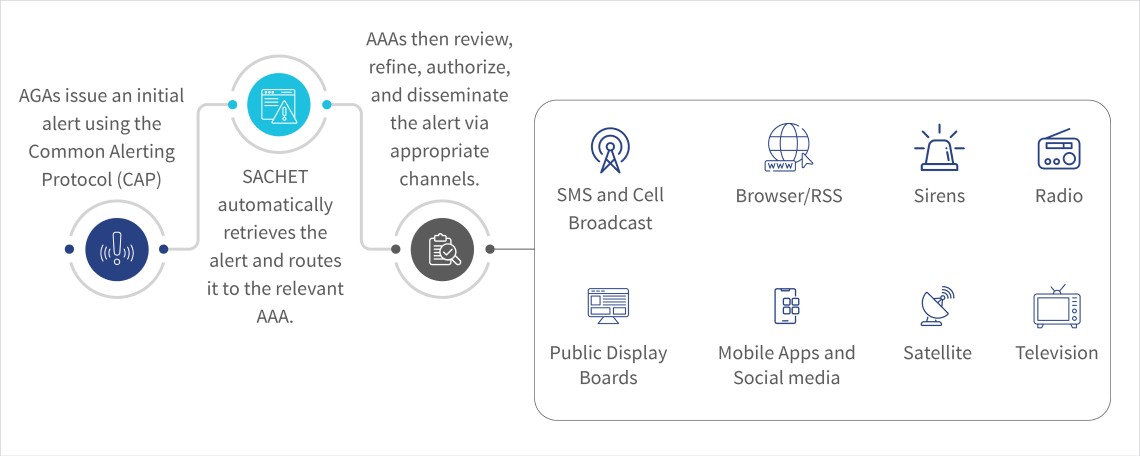
Figure 2: Overview of the alerting process and dissemination channels in SACHET
Since its launch, SACHET has issued more than 30,000 hazard-specific alerts through 44 billion LB-SMSs. Its streamlined workflows have helped deliver alerts in places without rapid channels and supported faster evacuations alongside more timely protective actions.
We have distilled six key considerations from our analysis of India’s SACHET public warning system to help countries design, deploy, and operate effective public warning platforms:
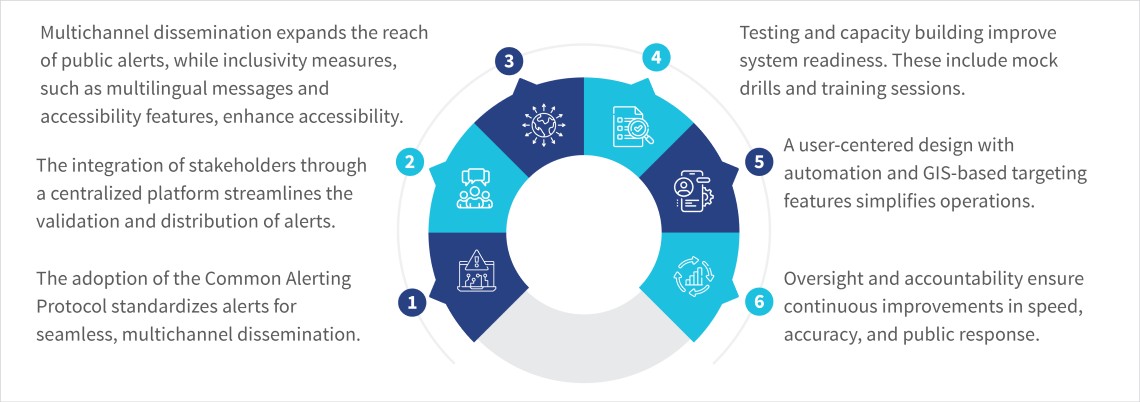
Beyond warnings: Triggering financial resilience
Timely alerts can save lives. However, they are not enough alone. Many vulnerable households struggle to take the necessary actions due to financial limitations. For example, a family cannot evacuate without money for transport, and a farmer cannot protect their livestock without cash in hand. True resilience means ensuring that people receive early warnings and have the financial means to respond effectively. Recent innovative financial mechanisms provide a means to bridge this critical gap:
1. Forecast-based financing (FbF): This refers to prearranged cash transfers that are automatically released when forecasts predict a hazard. It allows communities to prepare for the disaster, buy supplies, safeguard assets, or relocate before disaster hits.
2. Contingent lines of credit (CLOC): These refer to indexed loans that are made available to preapproved borrowers once disaster triggers, such as flood levels, are met. They offer fast relief without upfront costs.
3. Anticipatory loans: Similar to CLOCs, anticipatory loans are preapproved credit lines activated before a disaster, based on early warning forecasts. MSC will pilot this model with BURO Bangladesh and Atram.
Microfinance institutions are well-positioned to deliver these anticipatory loans at scale with their deep community networks and expanding digital capabilities. However, government support will be vital to make this ecosystem work. Governments can share accurate forecast data, offer partial credit guarantees to reduce lender risk, and enact favorable policies and regulations.
As climate threats intensify, countries must urgently modernize their EWS. SACHET provides a strong model for building an inclusive, tech-enabled public warning system. MSC seeks to pair these alerts with timely financial access, so vulnerable communities can act, adapt, and recover more quickly.
Read the complete report on the GSMA website for a deeper dive into India’s SACHET public warning system and the full set of insights and recommendations from our study.
Building the resilience of BURO Bangladesh’s customers to the impacts of climate change
MSC conducted research with BURO Bangladesh on agri-allied customers in four climate-vulnerable regions: Satkhira, Rangpur, Tangail, and Cox’s Bazar. The study assessed the direct and indirect impacts of climate change on livelihoods, customers’ coping and adaptive strategies, and their use of financial services to manage climate risks. It also explored their transactional behaviors, and demand for financial products. Based on the findings, we recommended ways for BURO and other MFIs to strengthen services and enhance customer resilience to climate change.
Before and after smart payments: A tale from Odisha
How can inclusion work if it leaves out people?
Alarmingly, only 22% of people with disability (PwD), the elderly, and vulnerable groups in Indonesia have bank accounts, as per 2022 data from Otoritas Jasa Keuangan (OJK). This points to a vast chasm that lies in contrast to Indonesia’s Medium-Term Development Plan (RPJMN) target of 98% financial inclusion by 2045. The Presidential Regulation No. 114/2000 also included PwD and the elderly in social welfare programs, yet their access to financial services has not kept up with their increasing economic participation.
With the rise of digital financial services, PwD face challenges and gaps when they attempt to access financial products. This is why interventions must be prioritized to enhance digital financial literacy and disability-inclusion sensitivity. OJK released the SETARA Guideline to address this growing digital divide. It provides a comprehensive framework to enhance financial inclusion for PwD in Indonesia. Yet, the implementation lacks actionable steps with defined targets from financial service providers (FSPs), regulators, and the government.
What did the DFAT-funded study reveal?
The DFAT-funded study conducted by Opportunity International Australia (OIA), MicroSave Consulting (MSC), and Koperasi Mitra Dhuafa (KOMIDA) finds that digital financial services can significantly improve financial access for PwD. Services, such as digital bank account opening, reduce the need for physical mobility, while FinTech lending offers simpler, more accessible alternatives to traditional bank credit.
Some apps have integrated screen readers and text-to-speech functionalities, though their adoption remains limited. DANA, OVO, and GoPay have started implementing these accessibility features. Despite this development, PwD still face challenges when they access financial services, which include biometric and e-KYC processes incompatible with specific impairments, business loan applications, and discriminatory treatment from bank staff. Until these systemic issues are solved, FSPs cannot be called inclusive.
Tailored solutions to drive PwD’s financial inclusion
Microfinance institutions (MFIs) have managed to offer grassroots solutions to reach PwD in villages and low-income communities. KOMIDA, for example, has approximately 15,000 female clients with disability spread across 13 provinces in Indonesia. These groups encourage the institutions to develop tailored products that include loan products for assistive technology, home and business renovation, and education savings for family members to access special education.
FSPs should also strengthen their efforts to enhance inclusivity. Accessible infrastructure, such as ATMs, bank branches, and trained staff is essential, but it needs more targeted interventions. These must include organization-wide gender and disability sensitization, alongside the development of tailored financial products for PwD.
The way forward for inclusion
MSC’s collaborative study has highlighted three strategic priorities, “the 3Ms,” to accelerate disability inclusion in Indonesia’s financial services.
Mainstream: All financial platforms and products must integrate universal design to drive innovation. This will ensure accessibility and inclusion for women, the elderly, PWD, people with low-income, and others with specific needs. The principle of “nothing about us without us” guides this. The increasing ageing population similarly faces barriers in terms of access to financial services. For example, television subtitles, originally designed to support individuals with hearing impairments, have also proven valuable for older adults and people who multitask—demonstrating how inclusive design can benefit a wider audience.
Mobilize: Mobilizing ecosystem collaboration will enable disability equity and rights. The private sector can lead by mainstreaming disability inclusion. It can improve ESG performance, integrate PWD into the workforce and supply chains, and offer inclusive products and services to reach underserved markets. The social sector, in particular, organizations of persons with disability (OPDs), should be engaged in advocacy and as expert service providers to support disability mainstreaming and enable meaningful employment and entrepreneurship.
Measure: Governments and regulators must establish clear and measurable targets to advance disability inclusion. The success of disability mainstreaming hinges on formal government endorsement, accountability, and sustained commitment. The Australian government offered tax incentives to organizations that hire or serve people with disability and mandates that all DFAT (Department of Foreign Aid and Trade)-funded foreign investments align with gender equality, disability equity, and rights. This model proves how policy can drive systemic inclusion through public, private, and social sector collaborations, regular disability inclusion sensitization, monitoring, and independent evaluations to ensure sustained progress.
People with disability have immense economic potential, but systemic exclusion has limited their potential. They are too often viewed through a charity lens, but they are entrepreneurs, workers, consumers, and vital contributors to national growth. This systemic exclusion represents not merely a rights issue but a missed economic opportunity for them.
Financial systems designed with accessibility and equity at their core can uphold financial inclusion. They have opened new markets, driven local economies, and fueled national productivity. Inclusion must now be directed beyond doing the right thing, but as smart economics.
This article was first published on The Jakarta Post platform on July 18th, 2025
A call for inclusive, sustainable growth to unlock the potential of Kenya’s fisheries sector
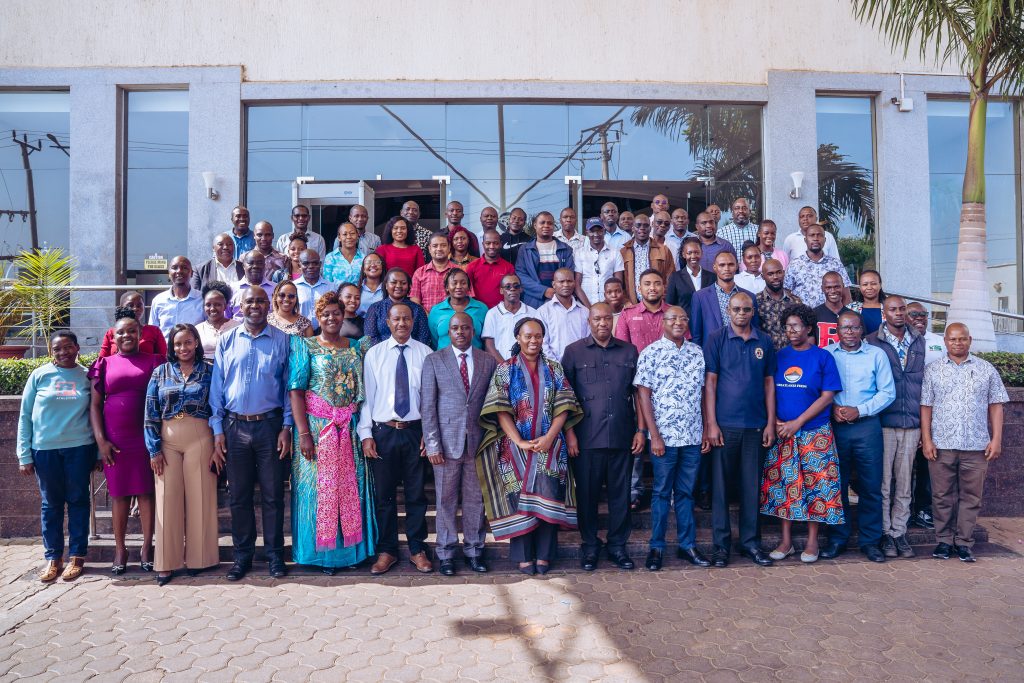
The national fisheries workshop for stakeholders deliberated on policy coordination, gender inclusion, and trade opportunities under Kenya’s Fisheries Programme.
Kenya’s fisheries sector holds immense potential to drive inclusive economic growth and regional trade, but only if policies are harmonised, coordination is strengthened, and women and youth are fully empowered to participate meaningfully.
This was the call to action from stakeholders who gathered in Kisumu from 26th to 27th June 2025 for a workshop on national fisheries that sought to strengthen cross-border trade and unlock opportunities for women and youth in the sector.
The two-day event was convened under the Women and Youth Economic Empowerment in Fisheries through Inclusive Market Access program, a four-year initiative led by TradeMark Africa and the African Continental Free Trade Area (AfCFTA) Secretariat, in partnership with the Mastercard Foundation. The initiative is underway in Kenya, Uganda, Tanzania, the Democratic Republic of the Congo (DRC), Zambia, Nigeria, across 11 border crossings, and in select island states in Africa.
The programme seeks to dismantle structural barriers that hold women and youth back from fully participating in the fisheries value chain to enhance their potential for economic growth. The main objectives are to provide training, strengthen supply chain linkages, promote digital solutions, simplify trade regulations, enforce standards, and facilitate cross-border market access. The target is to create or enable more than 240,000 meaningful, sustainable, and decent jobs by 2028.
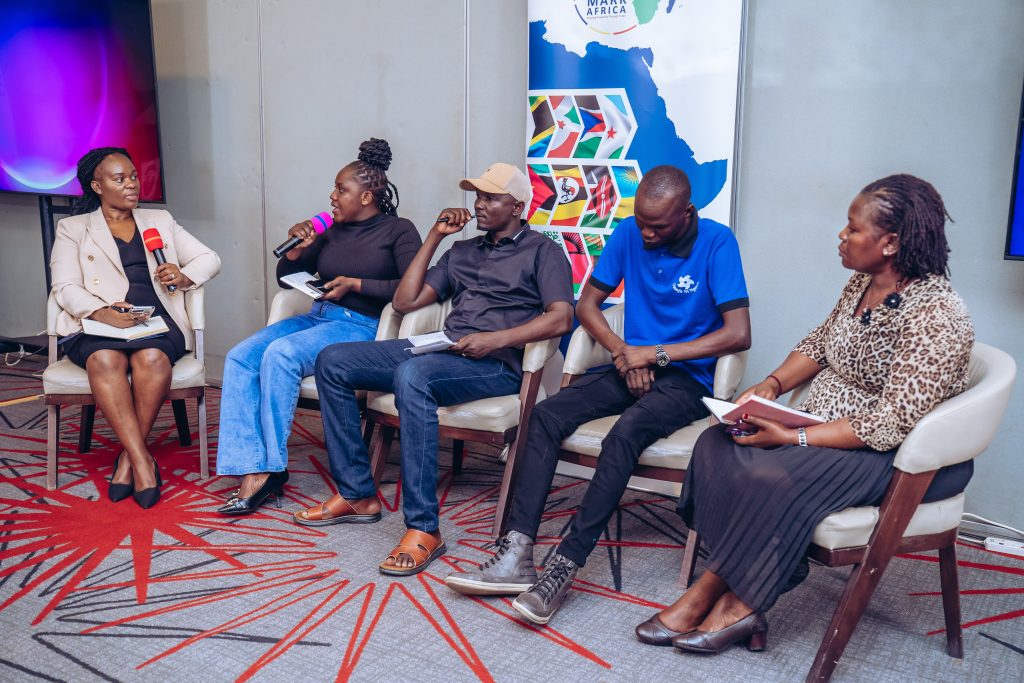
At the Kisumu workshop, a range of actors, which included county and national government officials, fishers, traders, researchers, youth and women leaders, private sector representatives, and civil society organisations, convened to identify shared priorities for the sector’s transformation.
“We propose to create a strategic framework to clarify roles, foster innovation, and ensure women and youth are part of the solution,” said Mathews Wanjala, Senior Programme Manager for Market Development and Private Sector Engagement at TradeMark Africa. He noted that the forum presented a valuable opportunity for public and private sector actors, researchers, and policymakers “to reflect on the challenges and opportunities in cross-border trade within the sector.”
Despite its potential, the fisheries sector continues to suffer from fragmented policies and inconsistent enforcement across countries and borders. The forum emphasized the urgent need for reforms to create a more supportive environment for small-scale traders and cross-border commerce.
Proposals included alignment of permits, pricing, taxation, and license frameworks. It also included clarification of institutional mandates to reduce duplication and improve enforcement of existing legislation. Participants also called for stronger engagement with regional blocs, such as the East African Community (EAC) and the Common Market for Eastern and Southern Africa (COMESA), to ensure member states uphold their shared commitments.
“It is not enough to have harmonised protocols on paper. The problem is implementation,” said Emma Adongo, a fish trader and youth leader with the Busia Women Cross-Border SACCO. She further emphasised that progress will remain limited unless all relevant actors follow through on implementation, particularly on policies designed to support women and youth.
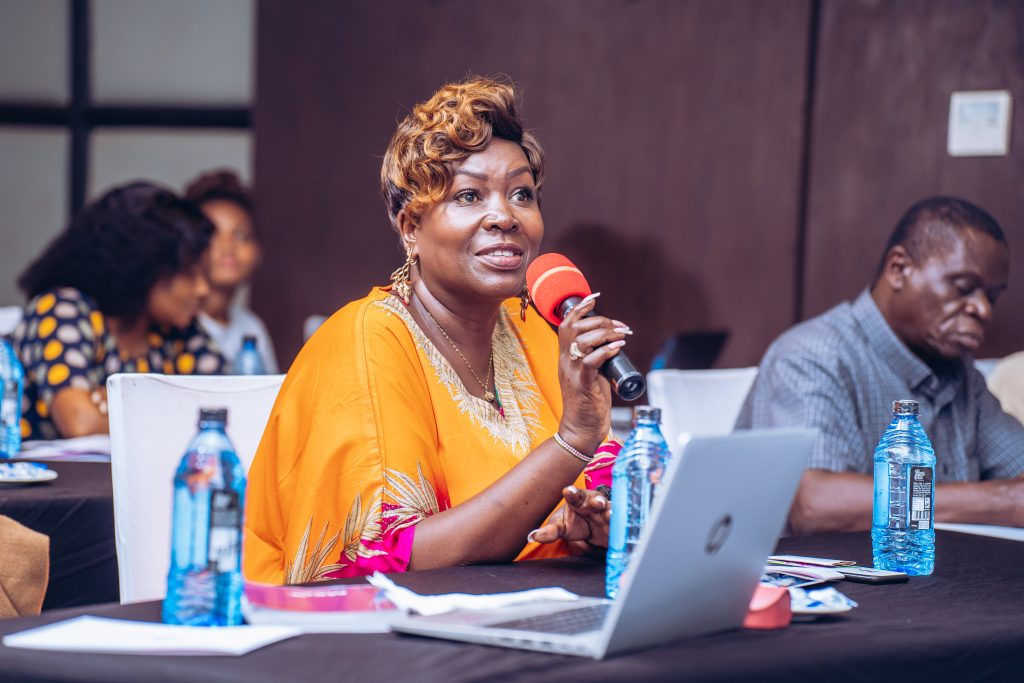
The workshop also strongly emphasised addressing social and financial barriers that disproportionately affect women and youth in fisheries and aquaculture, especially those working in informal or cross-border contexts. “Starting a fish business can be costly. Our appeal to the private sector and development partners is to support us in accessing loans on favourable terms to expand our businesses,” Ms Adongo added.
Additional recommendations included the need to improve access to financial services for female traders, promote collective marketing, and enhance transparency and accountability within SACCOs. Investment in market infrastructure, such as hygienic storage and handling facilities and crèches at landing sites, was also proposed to improve work conditions for women in the sector.
Further suggested measures included ways to expand gender sensitisation and capacity-building for shared household decision-making, provide mentorship and startup capital for youth (particularly in aquaculture), and strengthen cooperatives in border areas to boost the bargaining power of women and youth traders in the fisheries sector and protect traders from exploitation.
Participants also advocated for the establishment of a national digital platform to facilitate sector-wide knowledge exchange, greater collaboration with financial institutions and insurers, and the development of efficient monitoring and evaluation systems to track the impact of interventions.
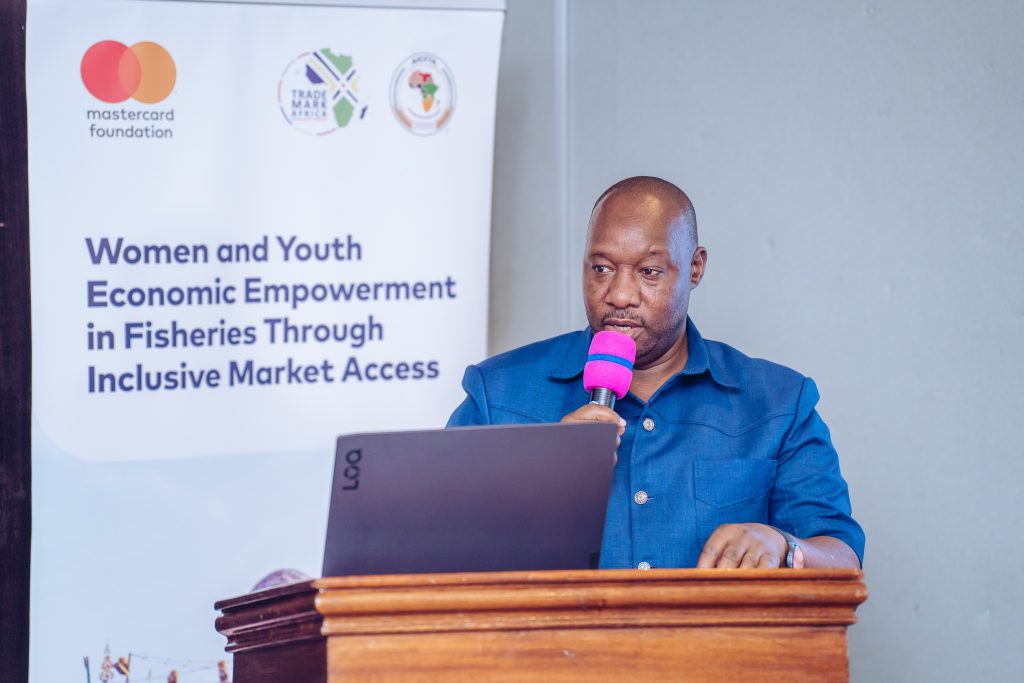
“The aquaculture and blue economy sectors are full of promise. Young people bring energy and drive. If we can reduce production costs, especially for feed, and link them with finance, they can transform the sector,” said Samson Kidera, Regional Coordinator at the Ministry of Mining, Blue Economy and Maritime Affairs.

